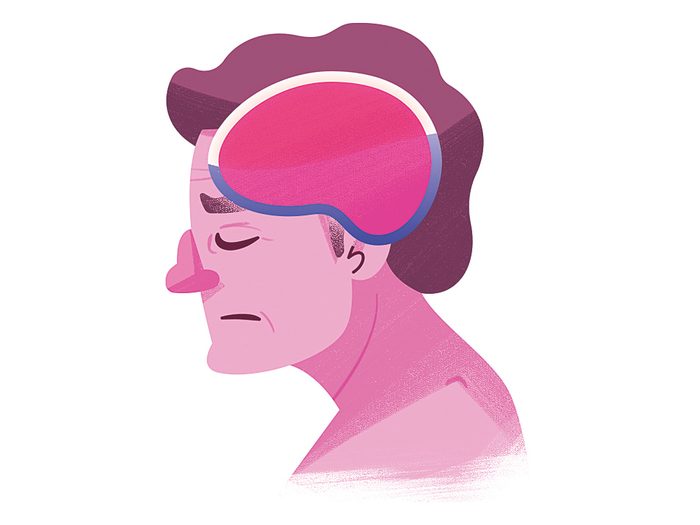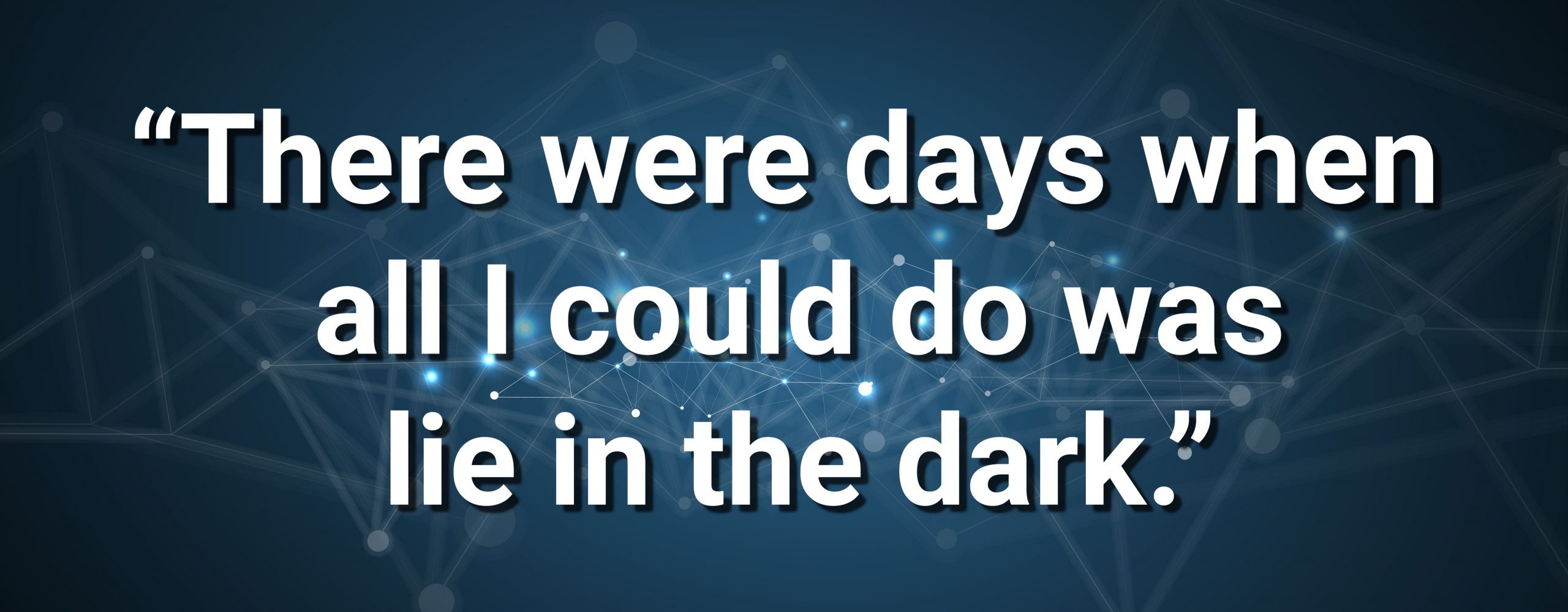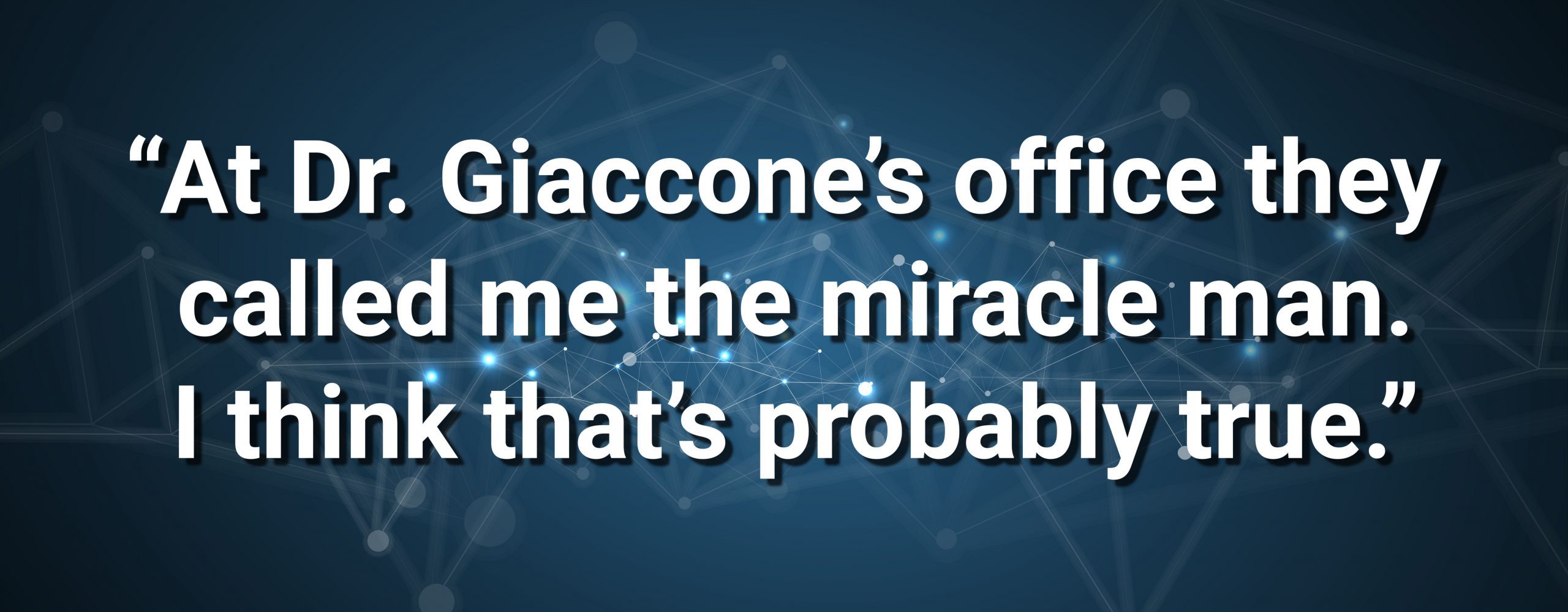“It Was Like a Flat Iron Pressing Down on My Brain”

Wracked with debilitating headaches and joint pain, this Ottawa man's search for a diagnosis led to a series of dead ends—until he came across an online chat room.
Dwane UnRuh can pinpoint the date it all started: Monday, September 11, 2017. That morning, the 56-year-old Ottawa civil servant woke up with a strange and terrible ache in his arms and legs that he’d never felt before. “It was a deep bone pain that just took over,” he says. Although he hauled himself out of bed to commute to his management job with Service Canada, it wasn’t long before he headed back home again. He lay down on the living room sofa, thinking he’d just need to wait it out.
But a day later, the limb pain was even worse. “I remember lying there writhing, like I was trying to crawl out of my skin,” he says. Even more worrying was the bizarre sensation he began to feel in his head. Standing up for more than a few minutes was agonizing and made him vomit. “It was like a flat iron pressing down on my brain,” he recalled. “Calling it a headache really wouldn’t do it justice.”
Maxed out on the recommended dose of over-the-counter pain relievers, he went to his family doctor, who sent out half a dozen referrals to various specialists. Based on UnRuh’s blood work, a rheumatologist ruled out arthritis and lupus, which can both cause joint pain and inflammation. A workup from an internist turned up nothing unusual, and a psychiatrist concluded that the pain was unlikely to be psychosomatic.
UnRuh wondered if his symptoms were somehow related to a rare blood disorder that had turned up on a routine checkup two years prior: monoclonal gammopathy of undetermined significance, or MGUS, a condition that causes bone marrow to produce an abnormal protein.
It raised UnRuh’s risk of developing multiple myeloma, a type of cancer that affects plasma cells in the blood. MGUS also predisposed him to developing amyloidosis, another bone-marrow disorder that can cause kidney, heart, liver and intestinal issues—as well as nerve problems, which he thought might be causing his mysterious pain.
But after ordering a fat-pad biopsy, a hematologist found no evidence of either condition. “I remember her telling me, ‘If it’s amyloidosis, I’ll eat my shorts,’” UnRuh says. A clinical geneticist diagnosed him with a rare connective-tissue disorder, Loeys-Dietz syndrome. Symptoms can include headaches and joint pain, but it didn’t fully explain the rest of what UnRuh was experiencing.

In addition to the pain and nausea, he now suffered from constant brain fog, fatigue, difficulty swallowing, skin sensitivity, vocal tics, involuntary limb jerking and a ringing in his ears. He struggled to find words for basic everyday objects and became unable to work. “There were days when all I could do was lie in the dark,” he says.
UnRuh was hopeful that meeting with a neurologist at a local hospital would yield more answers. But after just 15 minutes together, the doctor declared that UnRuh’s symptoms were “not neurological.”
Even after nearly a year of fruitless tests, UnRuh was determined not to lose hope. He turned to online patient communities for clues, and one day, a member of a tissue disorder support group posted about SIH—spontaneous intracranial hypotension.
Involving abnormally low levels of cerebrospinal fluid (CSF)—the clear liquid that surrounds, supports and protects the brain and spinal cord—SIH is linked to a tear or hole in the dura mater, the outer membrane that surrounds the brain and spinal cord. As the CSF fluid leaks out, the brain can sag downwards within the skull, putting pressure on its lower structures and causing symptoms that sounded very familiar to UnRuh, especially the head pain that worsened upon standing.
A local blogger who suffered from the condition gave him the name of a neurologist who had treated her—Dr. Roberto Giaccone, affiliated with the Ottawa Hospital. At UnRuh’s first appointment, Giaccone spent almost two hours asking questions and examining him before tentatively diagnosing him with a CSF leak.
According to Giaccone, about 70 per cent of CSF-leak patients present with symptoms outside of the classic textbook examples like nausea, neck pain and those headaches while upright. For example, UnRuh was afflicted with verbal tics—he’d involuntarily blurt out random words like “fiddle” or “skittle.” “Because symptoms can depend on which nerves are being compressed, it can be difficult to diagnose,” Giaccone says.
For further confirmation, UnRuh sent his MRI images to a leading neurologist at Cedars-Sinai Medical Center in Los Angeles. The doctor confirmed that although the leak wasn’t obviously visible on the scans, he agreed with Giaccone’s tentative diagnosis. Neurologists at Duke University in North Carolina also concurred and recommended UnRuh get something called an epidural blood patch.
The procedure involved injecting the patient’s own blood into the epidural space between the dura mater and the spinal vertebrae. With luck, the blood would form a clot and seal off the hole in the dura, most likely somewhere in the spinal column.

In March of 2019, after six months on a waiting list, UnRuh finally found himself in an operating room at the Ottawa Hospital, where an interventional anesthesiologist drew blood from an artery in UnRuh’s hand and then injected it into his lower spine toward the site of the suspected leak. “I remember lying on my side on the table and the ringing in my ears suddenly stopped,” UnRuh says. “I thought, What’s that noise? Then I realized it was clarity.”
After 15 to 20 per cent of epidural blood patches, the CSF leaks reoccur. But three years after his procedure, UnRuh remains in the clear and the vast majority of his symptoms have abated. Even though he sometimes struggles with memory and focus, UnRuh is back working full-time after undergoing a 10-week physical and cognitive retraining program with an occupational therapist.
Despite more than a year and a half of suffering, UnRuh considers himself lucky to have gotten a relatively quick diagnosis and to be almost fully recovered after a single procedure. “At Dr. Giaccone’s office they called me the miracle man,” he says with a laugh. “I think that’s probably true.”
Next, check out 20 symptoms you should never ignore.






